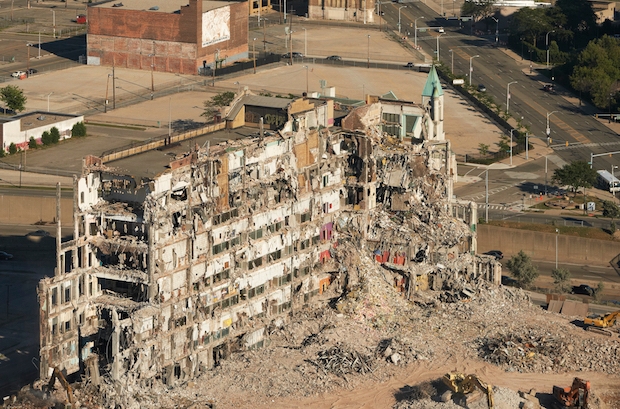In its pomp, they used to say that what was good for General Motors, Detroit’s Medici, was good for America. Detroit was imperial. Like Rome, it stood for the whole. Michigan Avenue was like something from a Roman urbs: a decumanus maximus of this planned city that created and was enriched by the automobile. Then, like all empires, it began to collapse.
By the time of my first visit 30 years ago, there were already clusters of youths on street corners picking their teeth with switchblades. All the signs of decay were present: boarded-up shops and discount stores. The Renaissance Center, a mirror-glass tubular tower whose form suggested a car’s cylinder, had just been built as a rearguard gesture. Its name mocked the encroaching reality.
Soon, Detroit was derelict and tumbleweed was blowing down its desolated avenues. The bankruptcy of General Motors confirmed its decline. Ironically, it had offices in the Renaissance Center. There was white flight and a poisonous cocktail of disinvestment and deindustrialisation. The city could not pay for itself and its services. Large tracts of its land were abandoned and handed back to nature. The population fell. It was sub-prime central.
History has seen cities wiped out by plague and volcanoes, but none which has gone into terminal and apparently irrecoverable economic decline. The industrial city is a defining phenomenon of our culture and now, it seemed, no one had any more use for one of the greatest. It had been an untested assumption that our cities would continue to grow and prosper. Perhaps they do not. But what do you do with a dead city? No one seemed to know. Detroit did not even have the energy to consider ‘managed decline’, the cant term for urban defeatism.
Property prices entered the territory between comedy and tragedy.








Comments
Join the debate for just £1 a month
Be part of the conversation with other Spectator readers by getting your first three months for £3.
UNLOCK ACCESS Just £1 a monthAlready a subscriber? Log in